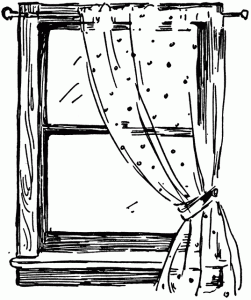

The window is everywhere, and we couldn’t imagine a world without it. It protects us from harsh weather, shields us from danger, decorates our homes, and permits sunshine to grace our living spaces. As accustomed as we are to having windows ordinate our interior habitats, have you ever wondered where the window got its name or how it was developed? If so, keep reading.

Once upon a time, long, long ago, Scandinavian ancestors, the Norsemen, were living in some very stinky living situations. You see Norseman homes were completely sealed up and frequently became hot and smelly during the summer months. Since the Norse shared their homes with their livestock, the smell tended to get, well, pretty potent. In order to get relief from the stench, the Norse cut holes in the walls and ceilings of their homes for ventilation. They called these ventilation holes vinor auga, meaning “the wind’s eye.”
Hole-in-the-wall windows continued to be the norm for many, many years. To better express the function of these windows, the Swedish changed the name to vindoga meaning, “hole through roof.” It wasn’t until the 4th century that glass was introduced into the window design by the Romans, and by the 17th century, glass was common in most window construction.
Other notable moments in window history are as follows: Window dressing was recorded in 1790, the window seat created in 1778, and window shopping dates back to 1922.
So the next time you look through your beautifully built, energy efficient windows, just remember that windows weren’t always built this way. There was a time when windows lacked window sills, screens, shutters, and shades. Windows originated as simple wall cutouts to let in the fresh air. Look how far windows have come and be thankful that you have access to such an advanced window product.